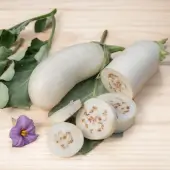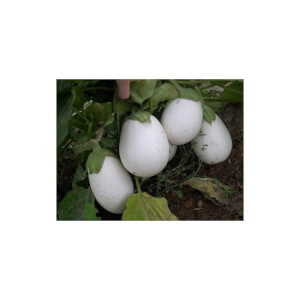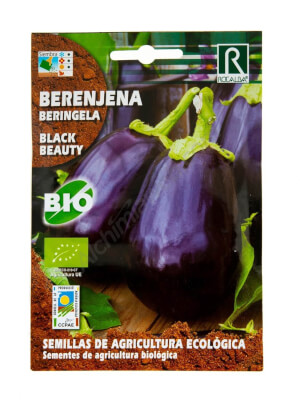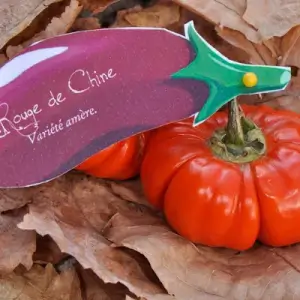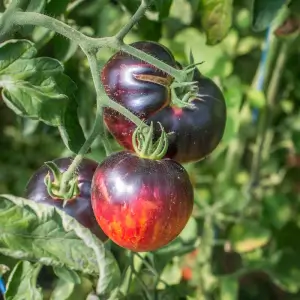Kokopelli Association presents the Chinese White Sword Aubergine seeds. A variety characterised by elongated and white fruits, with sweet flavour and smooth texture. It is a compact, high-yielding plant that adapts well to warm climates and fertile soils.
Chinese White Sword Aubergine, origin, and characteristics
Chinese White Sword aubergine belongs to the species Solanum melongena, belonging to the Solanaceae family, like the tomato and the pepper. It is native to China, where it has been cultivated for centuries. It takes its name (Chinese White Sword) from its fruit's shape and colour.
The fruits are cylindrical, straight or slightly curved, about 15cm long and 3cm in diameter. The skin is smooth and shiny, creamy white in colour. The pulp is white, tender and seedless. The taste is sweet and delicate, without a trace of bitterness.
It is a short and compact plant, about 60cm tall. It develops large, lobed leaves, dark green in colour. The flowers are solitary or in clusters, purple with a yellow centre. It is a cross-pollinated plant, so it is recommended to grow several plants together to promote fertilisation.
Chinese White Sword Aubergine, cultivation, and care
Chinese White Sword Aubergine is an annual plant that needs heat and sun to thrive. It can be cultivated in pots or in open ground, if the substrate is rich in organic matter, well drained and with a pH between 6 and 7.
It is recommended to sow the seeds indoors, in trays or alveoli, and about 8 weeks before the last frost. The optimal temperature for germination is about 25ºC. Once the seedlings have about 4 true leaves, they can be transplanted to the final location, leaving about 40cm between plants and about 60cm between rows.
Aubergines require regular and abundant watering, but without flooding the soil. They also benefit from organic mulch to retain moisture and prevent weeds. It is convenient to apply a fertiliser rich in nitrogen at the beginning of cultivation, and one rich in phosphorus and potassium during flowering and fruiting.
To prevent pests and diseases, the cultivation can be associated with aromatic plants such as rosemary, basil or mint. It can also be used organic treatments such as potassium soap or neem extract. Some of the most common problems that can affect aubergine plants are aphids, spider mites, nematodes, downy mildew, and gray rot.
The harvest is ready from 3 months after the transplant, when the fruits have reached the desired size and colour. It is recommended to cut them with a knife or scissors, leaving a piece of stem. They can be kept in the fridge for a few days or frozen previously blanched.
Chinese White Sword Aubergine, consumption, and properties
Chinese White Sword Aubergine is a very versatile variety in the kitchen, as it can be prepared in a variety of ways: steamed, sautéed, fried, roasted, stuffed, pickled, or canned. Its sweet flavour pairs well with other ingredients such as garlic, ginger, soy sauce, or balsamic vinegar.


































